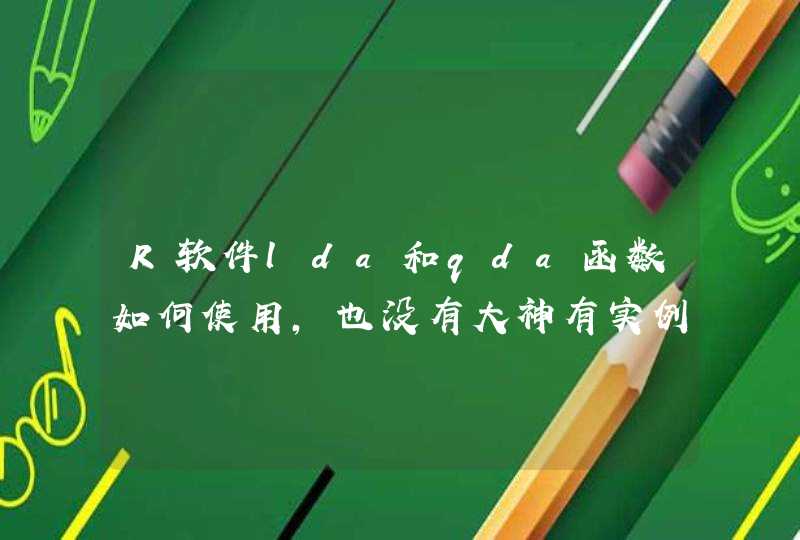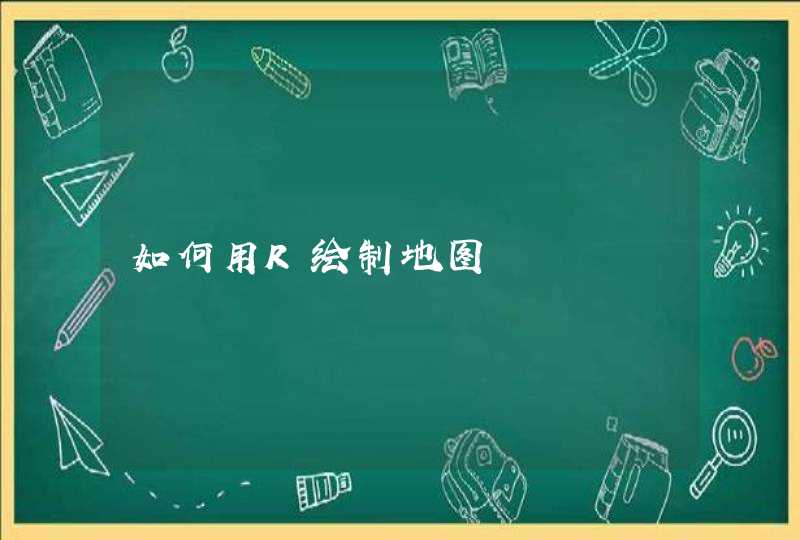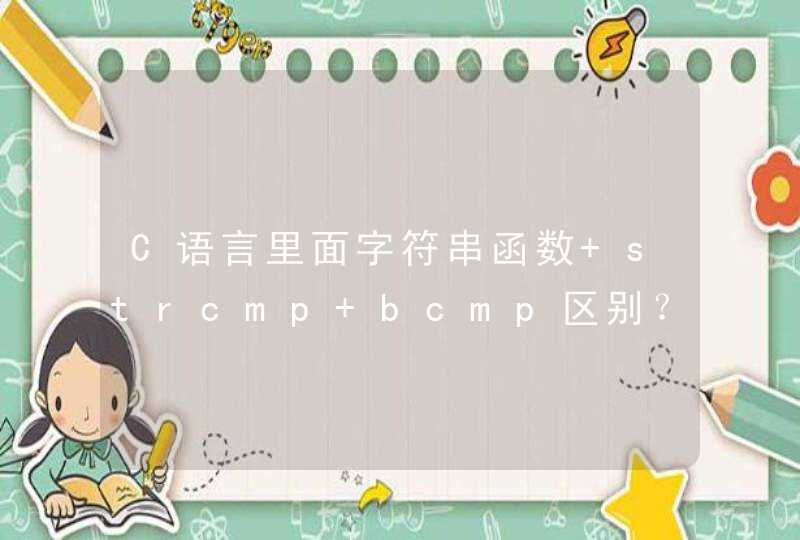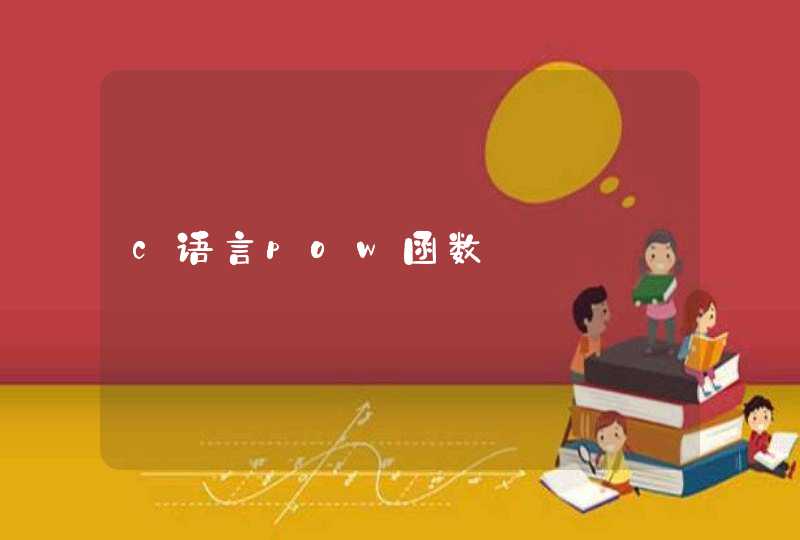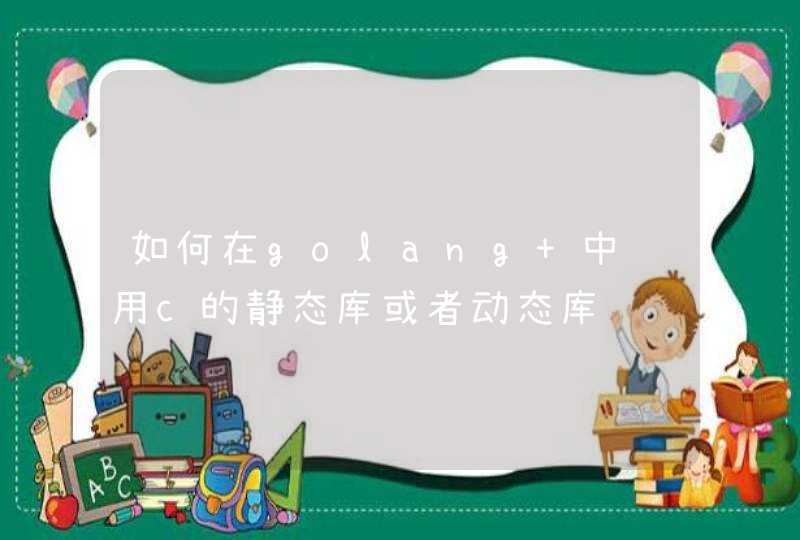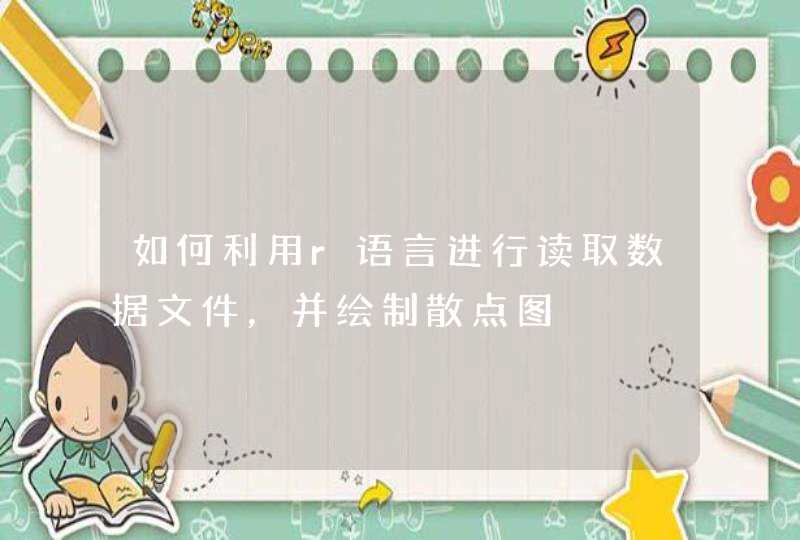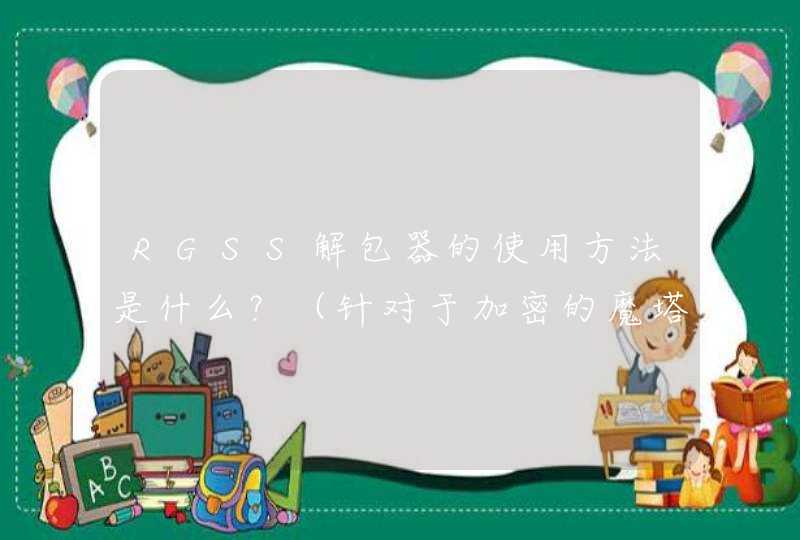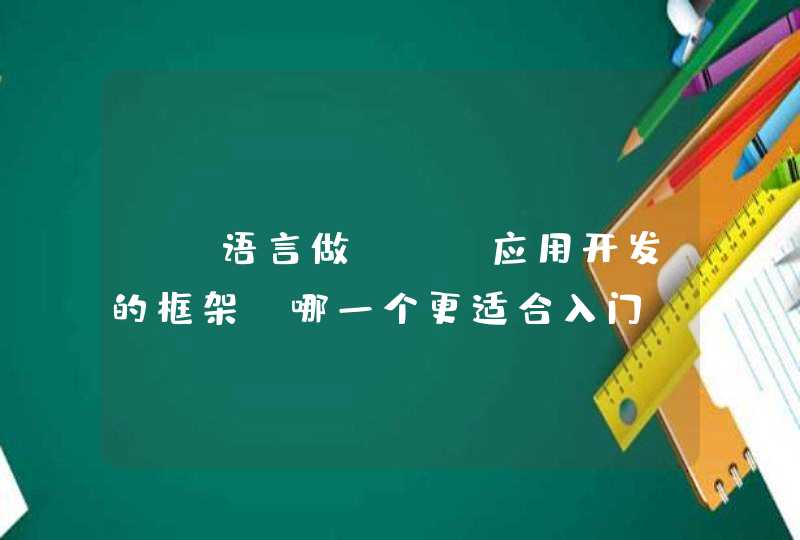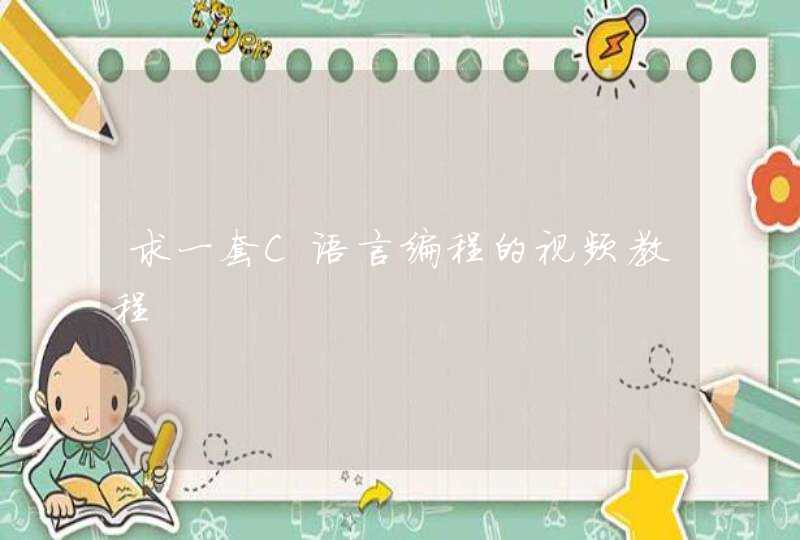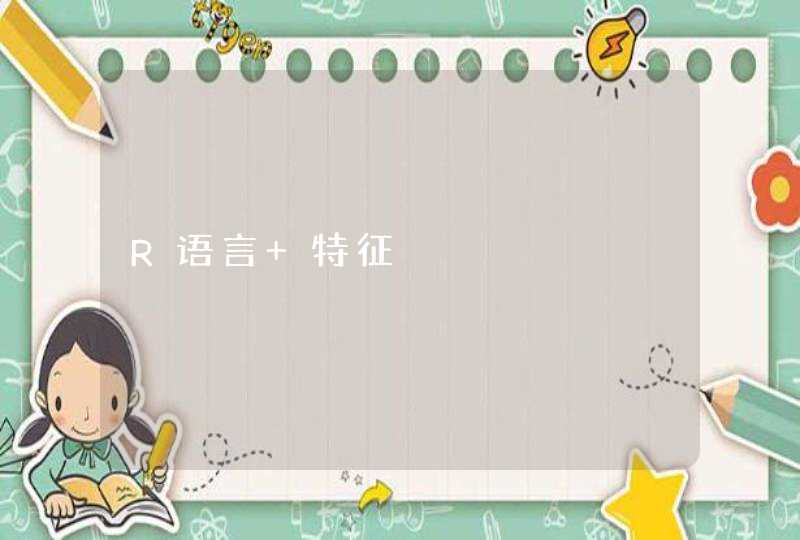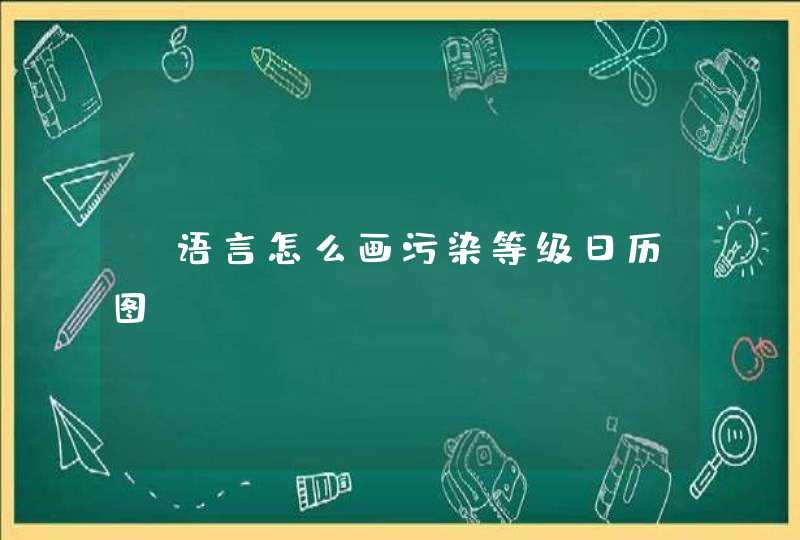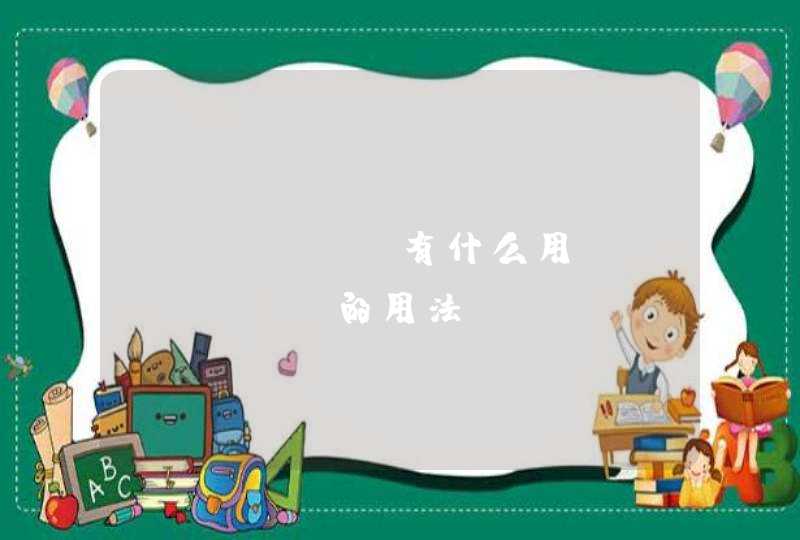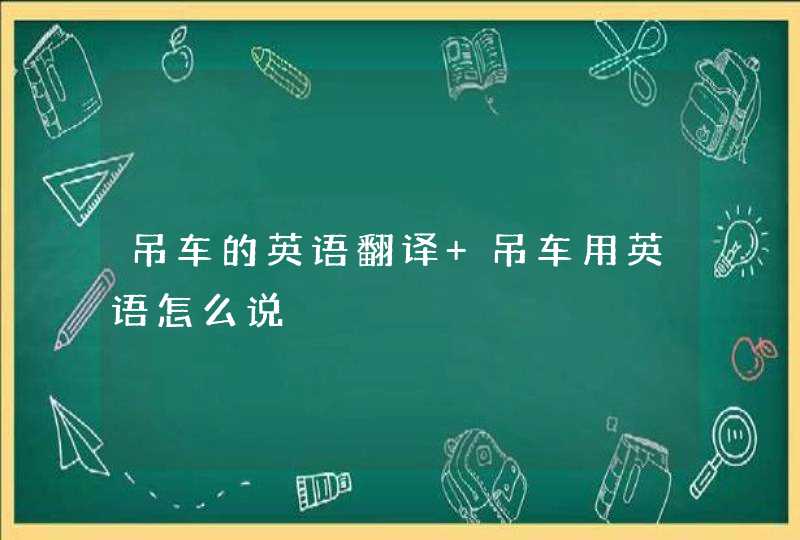
“吊车”的英文:crane
读法:英 [kreɪn] 美 [kren]
释义:
n.鹤;吊车,起重机
vt.&vi.伸长,探头
vi.迟疑,踌躇
词语用法:
1、用做名词
Crane is a kind of bird with very long legs and neck.
鹤是一种脚和脖子都很长的鸟。
We used a crane to lift the piano into the theater.
我们使用起重机将钢琴搬进剧场。
2、用做动词
The child at the back craned forward to see what was happening.
后面的孩子探出头看看出了什么事。
扩展资料
近义词:
1、hoist
英 [hɔɪst] 美 [hɔɪst]
vt.升起,提起
vi.被举起或抬高
n.升起;起重机,升降机;<俚>推,托,举
例句:Materials are elevated to the top floor by the new hoist.
材料由那台新起重机吊到楼顶。
2、derrick
英 [ˈderɪk] 美 [ˈdɛrɪk]
n.起重机(油井的)井架
例句:The ginpole is the simplest form of derrick.
起重吊杆是一种最简单的起重机。
(二)符合元音字母读音规则的单词
湖 lake[leik]
脸face[feis] 饼(蛋糕)cake[keik]
宫殿palace[plis] 制造make[meik]
箱(子)case[keis] 拿take[teik]
3.ame读[eim] 7.ate读[eit],ade读[eid]
游戏game[ɡeim] 盘子plate[pleit]
安全的safe[seif] 迟(的)late[leit]
同(样的)same[seim] 滑冰skate[skeit]
合成词联想:由name(名字) (大)门gate[ɡeit]
联想family['fmili]家;再 年级(等级)grade[ɡreid]
联想family name姓氏 日期读date[deit]
4.ane读作[ein] 8.ave读[eiv]
仙鹤,吊车读crane[krein] 戴伟(男名)Dave[deiv]
飞机,平面读plane[plein] 救save[seiv]
5.ape读[eip] 勇敢的brave[breiv]
磁带tape[teip] 离(开)leave[li:v]
形(状)shape[eip] 有是特例读have[hv]
同义词联想:由have(有) 联想have的单三现在式 has[hz],过去had[hd]。
(二)e在重读开音节中读[i:]
1.字母e读作[i:] 2.ese读 [i:z]
男他he[hi:] 请please[pli:z]
女她she[i:] (汉语)Chinese[taini:z]
我们we[wi:] 日语(日本人)Japanese
我读me[mi:] [dpni:z]
这,那the读[][i:] 词义联想:由Chinese(汉是读be[bi:] 语)联想China[tain]中国;
体育读P.E[pi:i:] 由Japanese(日语)联想
词义联想:由be(是)联想 Japan[pn]日本。
be的现在式am,is,are. 加字母联想:由please(请)
同音词联想:由be(是)联想 联想please[pi:zd](高兴
bee[bi:](蜜蜂) 的)。
(三)i(y)在重读开音节中读[ai]
1.i和y都读[ai] 天空sky[skai]
我的my[mai]
为什么why[wai] 果(菜,肉)汁juice
害羞的shy[ai] [du:s]
眼睛eye[ai] 办公室读office[fis]
哭cry[krai] 3.ide读[aid]
试try[trai] 骄傲pride[praid]
飞fly[flai] 骑ride[raid]
买buy[bai] (在…)旁边beside
被by[bai] [bisaid]
再见bye[bai] 边side[said]
滑雪ski[ski:] 决定decide[disaid]
喂读hi[hai] (向)导guide[ɡaid]
同音词联想:由eye(眼睛) 4.ike读[aik]
联想I[ai]我 迈克(男名)Mike[maik]
2.ice读[ais] 喜(欢)like[laik]
价格price[prais] 自行车bike[baik]
米rais[rais] 像like[laik]
好的nice[nais] 前缀联想:由like(喜欢)
冰ice[ais] 联想dislike[dislaik](讨厌; 不喜欢)
5.ine读[ain] 后缀联想:由write(写)联想
我的mine[main] writer[rait](作者)。
好的fine[fain] 7.ive读[aiv],ove读[u:v]
发光shine[ain] 到达arrive[raiv]
线line[lain] 驾(驶)drive[draiv]
机器特例读machine
居住live[liv]
[mi:n] 给give[ɡiv]
内服药读作medicine 贵的expensive
[medisin] [ikspensiv]
6.ite读[ait] 提高improve[impru:v]
怀特(姓)White[wait] 后缀联想:由drive(驾驶)联写write[rait] 想driver[draiv](驾驶员)。
喜爱的favourite 8.ise读[aiz]
[feivrit] 练习exercise[ekssaiz]
风筝读kite[kait] 聪(明的)wise[waiz]
同音词联想:由White(怀 惊奇的surprise[spraiz]
特)联想white[wait](白的)。
(四)o在重读开音节和非重读音节中都读[u]
所以so[su] 溜溜球yo-yo[ju ju]
不是no[nu] 零[ziru]
以前ago[ɡu] 电视播放读video[vidiu]
去读go[ɡu] 同音词联想:由no(不是)联照片photo[futu] 想know[nu](知道)
也also[:lsu] 2.oke读[uk]
土豆potato[pteitu] 打破broke[bruk]
番茄tomato[tmɑ:tu] (玩)笑joke[juk]
东京Tokyo[tukiu] 可口可乐读Coke[kuk]
多伦多Toronto 吸烟smoke[smuk]
[trntu] 3.one读[un]
千克kilo[kilu] 电话telephone[telifun]
喂hello[hlu] 骨头读作bone[bun]
钢琴读作[pinu] 一读one[wn]
4.ose读[uz]
没有人none[nn]
那些those[uz] 的单三现在式does[dz]
鼻(子)nose[nuz] 同音词联想:由to(到)联想
关闭close[kluz] too[tu:](也)
丢lose[lu:z]
6.ome读[m]
词义联想:由close关闭联想 一些some[sm]
closed(关着的)。 来come[km]
5.字母o读作[u:]
欢迎welcome[welkm]
做do[du:] ▲家home[hum]
到to[tu:] 合成联想:由home(家)联想
鞋读shoe[u:] homework[humw:k]
到…里into[intu:] (家庭作业)。
(到…)上onto[ntu] ove读[v]
词义联想:由do(做) 手套glove[ɡlv]
(五)u在重读开音节中读[ju:]
1.u和ue读作[ju:] 2.use读[ju:z]
菜单menu[menju:] 原谅excuse[ikskju:z]
大街(林荫道)avenue use用[ju:z]
[vnju:] 3.ute读[ju:t]
▲徒手功夫读kung fu 可爱的cute[kju:t]
[kfu:] 分钟minute[minit]
二、元音字母a、e、i、o、u在重读闭音节中分别读[][e][i][][]
(一)a在重读闭音节中读[]
1.black黑的[blk] (杰克,男名)Jack[k]
back背[bk] 外套jacket[kit]
2.ad,ad读[d] 合成词联想:由back(背)联
高兴的glad[ɡld] 想backpack[bkpk](双肩背包)。
爸dad[dd] 5.and读[nd],ant读[nt]
悲哀的sad[sd] 和and[nd]
坏(的)bad[bd] 手hand[hnd]
沙拉读作salad[sld] 站(忍受)stand[stnd]*
3.an,an读作[n] 沙sand[snd]
一个an[n] 岛屿island[ailnd]
可以can[kn] 地land[lnd]
妇女woman[wumn] 英国England[iɡlnd]
男人man[mn] 乐队读band[bnd]
计划plan[pln] 植物plant[plnt]
球迷(扇子)fan[fn] 大象elephant[elifnt]
音乐家musician 6.ank读[k]
[mju:zin] 银行bank[bk]岸
4.ance读[ɑ:ns] 谢thank[k]
法国france[frɑ:ns] 7.any读[eni]
(跳)舞dance[dɑ:ns] 多many[meni]
公司company[kmpni]
8.arrot读[rt] 班级class[klɑ:s]
胡罗卜carrot[krt] 草读grass[ɡrɑ:s]
鹦鹉woman[wumn] 11.at,at读[t]
9.ask读[ɑ:sk],ast读 帽子hat[ht]
[ɑ:st] 那that[t]
面罩mask[mɑ:sk] 肥的fat[ft]
问读ask[ɑ:sk] 猫cat[kk]
经过past[pɑ:st] 在at[t]
快的fast[frɑ:st] 坐sat[st](sit的过去式)
早餐breakfast[brekfst]
什么what[wt]
同义词联想:由pass(介绍 球拍读bat[bt ]
“经过”)联想pasted 同义词联想:由bat(球拍)
[pɑ:stid](动词“经过”的过 联想racket[rkit] (球拍)
去式)。 由hat(帽子)联想cap[kp]
10.ass读[ɑ:s] (帽)。
玻璃glass[ɡlɑ:s]
传(递)pass[pɑ:s]
(二)e在重读闭音节中读[e]
1.ed,ed读[ed] 4.en,en读作[en]
红的red[red] 何时when[wen]
床bed[bed] 那么then[en]
一百读作hundred 十ten[ten]
[hndrd] 笔pen[pen]
2.elf读[elf] 母鸡hen[hen]
架子shelf[elf] 女子(复数)women
自己self[self] [wimin]
3.ell读[el] 男子(复数)men[men]
拼写spell[spel]* 花园读garden[ɡɑ:(r)dn]
铃bell[bel] 5.end读[end],ent读[nt]
闻smell[smel] 朋友friend[frend]
卖sell[sel] 修(理mend[mend]
告诉tell[tel] 花费读作spend[spend]*
好(井)well[wel] 学生student[stju:dnt]*
旅行trave[trv] 公寓apartment
饭店hotel[hutel] [pɑ:tmnt]
6.ess读[es]
地址address[dres] 7.et读[et]
衣(服)dress[dres] 忘记forget[fɡet]
象棋chess[tes] 取get[ɡet]
猜guess[ɡes] 秘密secret[si:krit]
商业,事务business 让let[let]
[biznis] 8.even读[i:vn]
词义联想:由dress(衣服)联 晚上evening[i:vni]
想clothes[kluz](衣服); 更even[i:vn]
再联想uniform[ju:nif:m] 加字母联想:由even(更)
(制服)再联想pants 联想event[ivent](比赛项
[pnts](裤子,美国口语); 目)。
再联想short[:ts]短裤)。
(三)i在重读闭音节中读[i]
1.ick和ic读[ik] music [mju:zik]
棒stick[stik] 滴(答)tick[tik]
快(的)quick[kwik]
2.ridge读[ri] 小提琴violin[vailin]
冰箱fridge[fri] 薄的thin[in]
稀饭porridge[pri] 企鹅penguin[peɡwin]
桥读bridge[bri] 由win(获胜)联想
3.ill读[il] winner[win](获胜者)
病ill[il] 5.ind[aind]
药(丸)pill[pil] 找到find[faind]
将要will[wil] 种(类)kind[kaind]
(小)山hill[hil] 想法(思想)mind[maind]
技能,技巧skill[skil]* 在…后面读作behind
词义联想:由will(将要) [bihaind]
联想will的过去式would 6.ing读作[i]
[wud]。 带来bring[bri]
4.in,in读作[in] 东西thing[i]
开始begin[biɡin] 轻松的relaxing
在…里in[in] [rilksi]
孪生(子之一)twin[twin] 唱 sing[si]
获胜win[win] 响(戒指)ring[ri]
海豚dolphin[dfin] 国王king[ki]
参加读join[in]
有趣的interesting 7.ip读[ip]
[intristi] 旅行trip[trip]
早(上)morning[m:ni] (轮)船ship[ip]
兴奋的exciting[iksaiti] 炸土豆条读chips[tips]
●饺子dumpling 8.ish读[i]
[dmpli] 希望wish[wi]
下面的following[flui] 鱼fish[fi]
漂亮的good-looking 英语English[iɡli]
[ɡudluki] 碟(子)dish[di]
在…期间读during 9.is和iss读[is]
[djuri] 小姐Miss[mis]
开始beginning[biɡini] 想(念),(失去)miss[mis]
没(有东西)nothing 网球读作tennis[tenis]
[ni] 近义词联想:由Miss(小姐)
任何事情anything[enii] 联想Ms[mis];再联想
无聊的读boring[b:ri] Mrs[misiz](夫人,太太)。
躺lying[laii](lie的现在分词)
(四)o在重读闭音节中读[]
1.ob,ob读[bb] 3.ong读作[]
鲍勃Bob[rb] 年轻的young[j]
抢(劫)rob[rb] 歌读song [s]
工作读job[b] 强的strong[str]
2.ock读[k] 错的wrong[r]
钟表clock[klk] 沿着along[l]
锁lock[lk] 长的long[l]
点钟oclock[klk] 4.ot,ot读[t]
(短)袜sock[sk] 许多 lot[lt]
摇滚乐读rock[rk] 不not[nt]
同义词联想:由clock(钟表) 忘记forgot[fɡt]
联想[lɑ:m]clock(闹钟)。 热(的)hot[ht]
机器人[rubt]
(五)u在重读闭音节中读[]
1.uch读[] 同音词联想:由sun(太阳)
这样such[s] 联想son[sn] (儿子)。
(许)多much[m] us读[s]
2读[p] 我们us[s]
向上up[p] (公共汽)车bus[s]
杯(子)cup[kp] 加plus[pls]
▲跳跃读作jump[kp] ●减minus[mains]
3.un,un读作[n] ●小中巴minibus[minibs]
枪gun[ɡn] 讨论discuss[disks] *
跑run[rn] 5.ut,ut读[t]
太阳sun[sn] 但是but[bt]
玩笑读作fun[fn] 切cut[kt]
合成读作:由sun(太阳) 放置put[put]
联想sunglasses 关(闭)shut[t]
[snɡlɑ:siz](太阳镜)。
三、元音字母在非中毒音节中读 [],[i] 或者不发音
树袋熊koala[kuɑ:l] 孩子children[ildn]
熊猫读panda[pnd] (打)开open[upn]
澳大利亚Australia 小鸡(鸡肉)读chicken
[streilj]* [ikin]
加拿大Canada[knd] 3.et读[it]
非洲Africa[frik] 钱包wallet[wlit]
沙发sofa[suf] ▲街道street[stri:t]
香蕉banana[bnɑ:n] ●安静的quiet[kwait]
照相机读camera 喇叭trumpet[trmpit]
[kmr] 4.字母y读作[i]
2.en,en读作[n] 容易easy[i:zi]
经常often[fn] (快)乐(的)happy[hpi]
听listen[lisn] 业余爱好读hobby[hbi]
多云的cloudy[klaudi]
喜剧comedy[kmdi]
有风的windy[windi] 相当pretty[priti]
没有人nobody[nubdi] 脏(的)dirty[d:ti]
学习study[stdi] 活动activity[ktiviti]
悉尼Sydney[sidni] 6.ly和li都读[li]
调查survey[s:vei] 丑陋的ugly[ɡli]
健康的healthy[heli] 早(的)early[:li]
晴朗的读sunny[sni] 大声地loudly[laudli]
极小的teeny[ti:ni:] 卷(毛的)curly[k:li]
懒惰的lazy[leizi] 不友善的unfriendly
重heavy[hevi] [nfrendli]
电影movie[mu:vi] 花椰菜broccoli[brkli]
5.ty,ty读作[ti] 家(家庭)family[fmli]
同情piti[piti] 仅(仅)only[unli]
城(市)city[siti] 通常usually[ju:uli]
职责duty[dju:ti] 事实上really[rili]
党,(聚会)party[pɑ:ti] 7.ry和rry都读[ri]
渴的thirsty[:sti] 每一every[evri]
空的empty[empti] 很very[veri]
工厂factory[fktri] 8.on,on读作[n]
字典dirtionary 伦敦London[lnn]
[iknri] 狮(子)lion[lain]
图书馆library[laibrri] 原因reason[ri:zn]
国家country[kntri] ▲在…上[n]
记录片documentary 洋葱onion[njn]
[dkjumentri] 波士顿Boston[bstn]
饰品accessory[ksesri] 意见(看法)opinion
草莓strawberry [pinjn]
[str:bri]* 羊肉特例读mutton
抱歉的sorry[sri] [mtn]
(令人担)忧worry[wri]
运送(扛)读carry[kri]
可怕的scary[skεri]
饥饿的hungry[hɡri]
故事story[st:ri]
第二部分 符合辅音字母读音规则的单词
1.b和be都读[b] 体格build[bild]
描述(形容)describe 土地field[fi:ld]
[diskraib] 年长的读old[uld]
俱乐部club[klb] 野的wild[waild]
2.字母d读作[d] 孩子child[taild]
世界world[w:ld] 潮湿的humid[hju:mid]
词word[w:d] 词义联想:由child(孩子)联
胡须beard[bid] 想kid[kid](小孩,年青人。)
鸟bird[b:d] 3.f,fe和ffe都读[f]
疲倦的tired[taid] 牛肉beef[bi:f]
需(要)need[ni:d] 叶(子)leaf[li:f]
拥挤的crowded[kraudid] 妻子wife[waif]
放松的relaxed[rilkst] (小)刀knife[naif]
长颈鹿读giraffe[irf] 6.字母k读作[k]
围巾读作scarf[scarf]* 想think[ik]
4.字母g读作[ɡ] 喝(饮料)drink[drik]
腿部leg[leɡ] 公园park[pɑ:k]
蛋egg[eɡ] 暗(的)dark[dɑ:k]
旗flag[flɡ] 猪肉pork[pk]
包bag[bɡ] 叉fork[f:k]
大的big[biɡ] 办事员clerk[klɑ:k]
猪pig[piɡ] 说话speak[spi:k]*
小径zigzig[ziɡzɡ] 空白表格blank[blk]
5.ge,ge读作[] 牛奶milk[milk]
年龄age[ei] 工作work[w:k]
页page[pei] 后缀联想:由work(工作)联
语言language[lɡwi] 想worker[w:k](工人)
大(的)large[lɑ:] 7.l,ll读作[l]
桔子orange[rin] 邮政mail[meil]
(巨)大(的)huge[hju] 电子邮件e-mail[i:meil]
改变读change[tein] 玩具娃娃读doll[dl]
车轮读wheel[wi:l]
感觉feel[fi:l] 9.m和me都读[m]
女孩girl[ɡ:l] 时间time[taim]
极坏的读awful[:fl] (石)灰lime[lain]
8.le读[l] 奶油cream[kri:m]
人们people[pi:pl] 队(组)team[ti:m]
紫(的)purple[p:pl] 农场farm[fɑ:m]
桌子table[teibl] 臂arm[ɑ:m]
小(的)little[litl] 温暖的warm[w:m]
规则rule[ru:l] 鼓drum[drm]
面(条)noodle[nu:dl] 中等的midium[mi:dim]
文章读作article[ɑ:tikl] 从…读作from[frm]
可怕的terrible[terbl] 游泳swim[swim]
出售读sale[seil] 下午pm[pi:em]
例子example[] 考试exam[iɡzm]
苹果读apple[pl] 学期读term[t:m]
加字母联想:由(桌子) (吉姆男名)Jim[im]
联想vegetable[vetbl] 夫人madam[mdm]
(蔬菜);由rule(规则)联 情景喜剧sitcom[sitkm]
想ruler[ru:l](尺子) 问题problem[prblm]
近义词联想:由(桌子)
联想desk[desk](书桌)
博物馆读作museum 11.p和pe都读[p]
[mju:zim] 希望hope[]
近义词联想:由medium(中 (地)图map[mp]
等的)联想middle[midl] 团体(组)group[ɡru:p]
(中间的)。 汤(羹)soup[su:p]
同音词联想:由Jim(吉姆) 野营camp[kmp]
gym联想[im](体育馆)。 帮助help[help]
10.n和ne都读[n] 便宜的cheap[i:p]
学会learn[l:n] 停止stop[stp]
轮流(转弯)turn[t:n] 12.se和ce读作[s]
干净的(干扫)clean[kli:n] 护士nurse[n:s]
意思mean[mi:n] (钱)包purse[p:s]
(在…)之间 因为because[bikz]
绿(的)green[ɡri:n] 别的else[els]
外国的foreign[frin] 科学science[sains]
杂志magazine[mɡzi:n] (一)张piece[pi:s]
后缀联想:由clean(打扫)联 实践(练习)practice
想clean[kli:n](清洁工)。 [prktis]
许可证licence[laisns]
不同difference[difrns]
13.st[st] T恤衫T-shirt[ti: :t]
最多的most[must] 男(衫)shirt[ :t]
考试(测试)test[test] 卡式录音带盒cassette
最后的last[lɑ:st] [kset]
丢失的lost[l:st] 裙子skirt[sk:t]*
竞争contest[kntest] 单元unit[ju:nit]
主持人host[hust] 直的straight[streit]*
必须must[mst] 漂亮的smart[smɑ:t]
刚才just[st] 甜食dessert[diz:t]
邮件(邮递)post[pust] 参观visit[vizit]
(最)后(的)best[best] 水果fruit[fru:t]
清单读作list[list] 左边的left[left]
14.t和te都读[t] 困难的difficult[difiklt]
西方west[west] 皮带belt[belt]
它it[it] 严格的strict[strikt]*
休息rest[rest] 地方district[distrikt]*
坐sit[sit] 学科;科目subject
前面front[frnt] [sbikt]
(计)数count[kaunt]
5.x读[ks],xt读[kst] 下一个next[nekst]
性别sex[seks] 课文text[tekst]
传真fax[fks] 出租车读taxi[tksi]
狐狸fox[fks]
箱(盒)子box[bks]
更多注意力、快速记忆、快速阅读、思维导图文章
速读速记精华文章汇总
更多福利资料
开年福利!有孩子的你有福了
刻意练习和习得性无助,教你不再是巨婴,文末有福利。
懒惰与勤奋,今日有福利
觉得孩子笨,那是你培养方向和方法错了
习得性无助,你不够成功的根本原因和药
你的表达好不好,看这里
舒适区、学习区、恐慌区,站错区域,玩死你没商量注意力测试,你必须做的舒尔特方格量表:有深度解析哦
看看如下的内容吧:A
alongside -- The side of a vessel.
B
barrel -- A measurement term that refers to 42 gallons of liquid at 60 degrees Fahrenheit (15.56 degrees Celsius).
berth -- The structure where a vessel is secured for the loading and unloading cargo.
bonded warehouse -- A warehouse authorized by customs authorities for the storage of goods on which payment of duties is deferred until the goods are removed.
bow -- The front of a vessel. Also see "stern."
breakbulk cargo -- Loose, non-containerized products. Examples include steel slabs and coils.
bulk cargo -- Loose cargo shipped in the cargo hold of a vessel without mark and count. Examples include coal, grain and sulfur.
bunker -- A maritime term that refers to fuel used aboard a vessel.
C
cargo -- Freight loaded into a vessel.
cargo manifest -- A list of all cargo carried on a specific vessel voyage.
cargo tonnage -- Most ocean freight is billed on the basis of weight or measurement tons (W/M). Weight tons can be expressed in short tons of 2,000 pounds, long tons of 2,240 pounds or metric tons of 1,000 kilos (2204.62 pounds). Measurement tons are usually expressed in cargo measurements of cubic feet (one cubic foot equals 0.03 cubic meters) or cubic meters (one cubic meter equals 35.31 cubic feet). Typically, 40 cubic feet (1.13 cubic meters) is the measurement standard.
carrier -- Any person or entity who, in a contract of carriage, undertakes to perform or procure the performance of carriage by rail, road, sea, air, inland waterway or by a combination of such transportation modes.
chassis -- A frame with wheels and container-locking devices in order to secure the container for movement.
container -- A truck trailer body that can be detached from the chassis for loading into a vessel, a railcar, or stacked in a container depot. Containers may be ventilated, insulated, refrigerated, flat rack, vehicle rack, open top, bulk liquid or equipped with interior devices. A container may be 20 feet (6.1 meters), 40 feet (12.19 meters), 45 feet (13.72 meters), 48 feet (14.63 meters) or 53 feet (16.15 meters) in length, eight feet (2.44 meters) or eight feet, six inches (2.59 meters) in width, and eight feet, six inches (2.59 meters) or nine feet, six inches (2.9 meters) in height.
container freight station (CFS) -- A shipping dock where cargo is loaded ("stuffed") into or unloaded ("stripped") from containers. Container reloading from/to rail or motor carrier equipment is a typical activity.
container terminal -- An area designated for the stowage of cargo in containers. Usually accessible by truck, railroad and marine transportation, the terminal is where containers are picked up, dropped off, maintained and stored.
containerization -- Stowage of general or special cargo in a container for transport in various modes.
containerload -- A cargo load sufficient in size to fill a container either by cubic measurement or by weight.
container port -- A seaport that features cargo terminals developed specifically to handle marine cargo containers.
D
dock -- For ships, a cargo-handling area where a vessel normally ties up. For land transportation, a loading or unloading platform at an industrial location or carrier terminal.
doublestack train -- A train using specialized railcars that enable marine cargo containers to be stacked one atop another.
draft -- The number of feet (or meters) that the hull of a ship is beneath the surface of the water.
dry bulk container -- A container constructed to carry grain, powder and other free-flowing solids in bulk. Used in conjunction with a tilt chassis or platform.
dry cargo -- Cargo that is solid in nature and normally does not require temperature control.
E
export -- Shipment of goods to a foreign country.
F
feeder service -- Cargo to/from regional ports are transferred to/from a central hub port for a long-haul ocean voyage.
feeder vessel -- A short-sea vessel that transfers cargo between a central hub port and smaller spoke ports.
FEUs -- Maritime abbreviation for "40-foot equivalent units," which refers to containers that are 40 feet (12.19 meters) in length. One FEU is equal to two TEUs, or "20-foot equivalent units." See "TEUs."
flat car -- A railcar without a roof and walls.
flat rack/flat bed container -- A container with no sides and frame members at the front and rear for cargo loading from the sides and top.
foreign-trade zone -- A free port in a country divorced from Customs authority but under government control. Merchandise, except that which is prohibited, may be stored in the zone without being subject to import duty regulations.
free port -- A restricted area at a seaport used for the handling of duty-exempt import goods.
freight -- Refers to either the cargo carried or the charges assessed for carriage of cargo.
freight forwarder -- A person whose business is to act as an agent on behalf of the shipper. A freight forwarder frequently makes the booking reservation.
G
gateway -- A point at which freight moving from one territory to another is interchanged between transportation lines.
gross weight -- The entire weight of goods, packaging, container and freight car, ready for shipment. Generally, the combined weight limit of the cargo, container and tractor for highway transport is 80,000 pounds (36,287.39 kilograms).
H
hatch -- The opening in the deck of a vessel, providing access to the cargo hold.
I
import -- Shipment of goods from a foreign country.
inland carrier -- A transportation line that hauls export or import traffic between ports and inland points.
intermodal -- A shipping term denoting the interchangeable movement of cargo containers between different modes of transportation, primarily ship, truck and train, where the equipment is compatible with the multiple transport systems.
J
Jacob's ladder -- A rope ladder suspended from the side of a vessel that is used for boarding.
just in time (JIT) -- In this method of inventory control, warehousing is minimal or non-existent: The container is a "movable" warehouse and must arrive neither too early nor too late
K
knot -- One knot is equal to one nautical mile (6,076 feet or 1,851.96 meters) per hour. In the early sailing days, speed was measured by tossing overboard a log secured by a line. Knots were tied into the line at intervals of approximately six feet (1.83 meters). The number of knots measured was then compared to the time required to travel the distance of 1,000 knots in the line.
L
laden -- Loaded aboard a vessel.
landbridge -- The movement of cargo, by water, from one country through the port of another country, by rail or truck, to an inland point in that country or to a third country. For example, cargo from Japan is landbridged across the United States to France.
liquid bulk -- Cargo that is fluid in nature and typically transported in tankers. Examples include oil and other petroleum products.
longshoreman -- An individual employed in a port to load and unload cargo vessels.
loose -- Without packing.
M
maritime -- Business pertaining to commerce or navigation transacted upon the sea or in seaports.
meter -- One meter is equal in length to 3.28 feet or 39.37 inches.
metric ton -- One metric ton is equal in weight to 2,204.62 pounds or 1,000 kilograms.
mile -- One mile is equal to 5,280 feet or 1.61 kilometers on land. Also see "nautical mile."
mini-landbridge -- An intermodal system for transporting containers by ocean and then by rail or motor to a port previously served as an all-water move. For example, cargo from China is mini-landbridged through Seattle to New York.
multimodal -- Synonymous with "intermodal" for all practical purposes.
N
nautical mile -- One nautical mile is equal in length to 607,612 feet or 1.85 kilometers, which is the distance of one minute of longitude measured at the equator. Also see "mile."
near-dock railyard -- A cargo facility used primarily to sort marine cargo containers and assemble into trainloads bound for common destinations. These railyards are located inland, in close proximity to a port waterfront.
non-vessel operating common carrier (NVOCC) -- A cargo consolidator in ocean trades that will buy space from a carrier and subsell it to smaller shippers. The NVOCC conducts itself as an ocean carrier, except that it will not provide the actual ocean or intermodal service.
O
on-dock railyard -- A cargo facility used primarily to sort marine cargo containers and assemble them into trainloads bound for common destinations. These railyards are located on a port waterfront.
origin -- The location where a freight shipment begins its movement.
overheight cargo -- Freight that is more than eight feet high, or too tall to fit into a standard container.
P
pallet -- A platform with or without sides, on which a number of packages or pieces may be loaded to facilitate handling by a forklift or similar functioning equipment.
pier -- The structure where a vessel is secured for the loading and unloading cargo.
piggyback -- A transportation arrangement whereby truck trailers and their loads are carried and moved by train to a destination.
port -- There are three common definitions:
1. A harbor with piers or docks.
2. The left side of a ship when facing the bow. Also see "starboard."
3. An opening in a vessel's side, used for handling freight.
port of call -- A port where a vessel discharges or receives freight.
port of entry -- A port where cargo enters a country and is unloaded.
port of exit -- A port where cargo is loaded and leaves a country.
Q
quay -- A structure attached to land to which a vessel is moored. Also see “berth," "dock" and "pier."
R
ramp -- A railroad terminal where containers are received or delivered and trains are loaded or discharged.
reefer -- An industry term for a refrigerated or temperature-controlled container.
relay -- The transfer of containers from one ship to another when both vessels are controlled by the same network (carrier) manager.
revenue ton -- A ton measurement on which shipments are freighted. If cargo is rated as weight or measure (W/M), whichever produces the higher revenue will be considered the revenue ton. Weights are based on metric tons and measures are based on cubic meters. Hence, one revenue ton is equal to one metric ton (2204.62 pounds) or one cubic meter (35.31 cubic feet).
roll-on roll-off (Ro/Ro) -- A method of ocean cargo service using a vessel with ramps, which allow wheeled containers, trailers or vehicles to be loaded and unloaded without the use of cranes.
S
service -- A string of vessels that makes a particular voyage and serves a particular market.
ship chandler -- An individual or company selling equipment and supplies to ships.
shipper -- The person or company who usually is the supplier or owner of commodities shipped. Also called the consignor.
ships --There are nine basic types of ships:
1. barge carriers -- Ships designed to transport barges.
2. bulk carriers -- All vessels designed to carry bulk cargo, such as grain, fertilizers, ore and oil.
3. combination passenger and cargo ships -- Cargo vessels with the capacity for 13 or more passengers.
4. freighters -- Comprises refrigerated and unrefrigerated breakbulk vessels, containerships, partial containerships, roll-on roll-off vessels and barge carriers.
5. full containerships -- Vessels equipped with permanent container cells for container storage, with little or no space for other types of cargo.
6. general cargo carriers -- This category includes breakbulk freighters, car carriers, cattle carriers, pallet carriers and timber carriers.
7. partial containerships -- Multipurpose containerships with one or more, but not all, cargo compartments fitted with permanent container cells. The remaining compartments are used for noncontainerized cargo.
8. roll-on roll-off vessels -- Specialized ships designed to carry wheeled containers, trailers and vehicles using onboard ramps.
9. tankers -- Ships fitted with tanks for storage of liquid cargo, such as crude petroleum and petroleum products, chemicals, liquefied gas, wine and molasses.
short ton -- One short ton is equal in weight to 2,000 pounds or 0.91 metric tons.
side loader -- A lift truck fitted with lifting attachments operating on one side for handling containers.
slip -- A ship's berth between two piers.
spreader -- Equipment designed to lift containers by their corner casters.
stack car -- An articulated five-platform railcar that allows containers to be doublestacked one atop another.
stack train -- A rail service whereby railcars carry containers doublestacked on specially operated unit trains.
starboard -- The right side of a ship when facing the bow. Also see "port."
stern -- The end of a vessel. Also see "bow."
stevedore -- A person or company that employs longshore workers and establishes agreements to load or unload ships.
stowage -- A marine term that refers to loading freight into vessels' cargo holds.
straddle carrier -- Mobile truck equipment that is capable of lifting containers within its own framework.
supply chain -- A logistical management system that integrates the sequence of activities from delivery of raw materials to the manufacturer to delivery of the finished product to the customer. "Just in time" is an example of supply chain management.
T
tariff -- A publication that sets forth the charges, rates and rules of ports and transportation companies.
terminal -- An assigned area where containers are prepared for loading into a vessel, train or truck, or are stored immediately after discharge from the vessel, train or truck.
TEUs -- Maritime abbreviation for "20-foot equivalent units," which refers to containers that are 20 feet (6.1 meters) in length. Two TEUs are equal to one FEU. Also see "FEU."
transship -- To transfer goods from one transportation line to another, or from one ship to another.
turnaround -- In water transportation, the time between the arrival and departure of a ship from a port.
U
unit load -- Packages loaded onto a pallet, in a crate or any other way that enables them to be handled at one time as a unit.
unit train -- A train comprising a specified number of railcars that remain together as a unit until reaching a designated destination.
unitization -- The consolidation of a quantity of individual items into one large shipping unit to facilitate handling. Also: The loading of one or more large items of cargo onto a single piece of equipment, such as a pallet.
V
vanning -- A marine term for stowing cargo in a container
warehouse -- A place for the reception, delivery, consolidation, distribution and storage of cargo.
W
warehousing -- The storage of cargo.
weights and measures --
1. One cubic meter is equal to 35.31 cubic feet.
2. One long ton, or gross ton, is equal to 2,240 pounds or 1,016.05 kilograms.
3. One measurement ton is equal to 40 cubic feet or one cubic meter.
4. One metric ton, or kilo ton, is equal to 2,204.62 pounds or 1,000 kilograms.
5. One short ton, or net ton, is equal to 2,000 pounds or 907.18 kilograms
Y
yard -- This term commonly refers to a railroad yard with many rail tracks for assembling, storing or switching freight trains.
